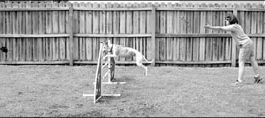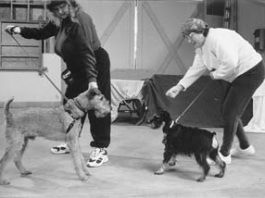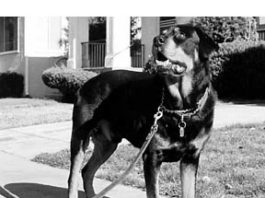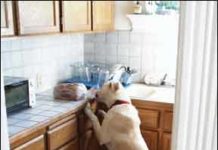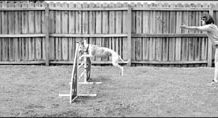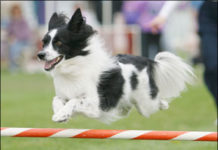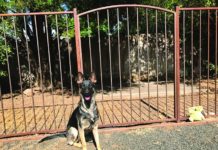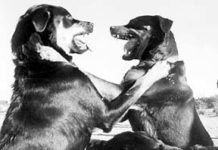How to Safely Break Up a Dog Fight
If you've ever been present when a dogfight broke out, you know how dangerous it can be for everyone concerned. I've lost track of how many times we've said this, but as always, prevention beats cure. It is imperative that you manage and train your own canine family to minimize the risk of serious dogfights. Identify situations that are likely to light the dogfight fuse, such as fence-fighting or resource guarding, and figure out how to avoid them and/or modify the behavior that causes them.
Aggressive Behavior Information
It has become all too common to see lists of breed bans in multi-unit residences as well as municipalities. Books could be written about the drawbacks of breed-specific legislation (BSL), but suffice to say that all dogs have the potential to bite and no breed has 100 percent benign membership. The bully breed" lovers among us (count me in) would point out that many of these dogs are model citizens and great companions."
Comments on “Alpha” Dominance Theory
There is a growing body of information available to anyone who wants to learn more about why dominance theory is so outdated and incorrect. Here are 10 resources to get you started...
Rage Syndrome in Dogs
The term rage syndrome" conjures up mental images of Cujo
Agility Games for Managing Dog Aggression
Owning an aggressive, fearful, or other type of special needs" dog is stressful. When your dog overreacts to other dogs or just the stimulus of being out in the world by barking
Solutions for Reactive Dog Behavior
At some point in our lives, some of us find ourselves living with a difficult dog, one whose behavior challenges our patience, and exhausts our training knowledge – and opens our hearts and eyes to a new, better way of training. This is the story of one such dog and her very knowledgeable dog owner. Together, they reached an entirely new and higher level of dog training skills, thanks to the owner’s life-altering experiences with a reactive dog who wasn’t fit to compete in the career intended for her: Flyball. Flyball is not the sport for everyone. It is a relay team event, which means you have to commit to training and competing with your dog and other dogs and dog owners as a team, and you have to have an appreciation for over-the-top dogs and the resulting cacophony of sounds. In flyball, a team of four dogs race, one after the other, leaping a series of hurdles, throwing their bodies against a spring-loaded box that ejects a tennis ball, snatching the ball, and hurtling their bodies back down the row of jumps to where their next teammates strain to be released for their turns. The fastest team wins.
Managing Dog-Aggressive Dogs in the Family
If you do nothing else about the aggression between your dogs, you must scrupulously manage their movements and activities. Every time your dog successfully engages in a behavior that you don't want her to exhibit, it makes it that much harder to convince her that it's not a useful behavior strategy. Every time your dog aggressively communicates to another canine family member, it increases the potential for unresolvable aggression between the two and serious injury to one or both.
Avoiding Potential Dog Attacks
There are many reasons a person might tend to look the other way when confronted with a potentially dangerous dog. You may be busy; you may be fearful of the dog's owner or potential retaliation; you may be friends with the owner and reluctant to cause hard feelings between you; you may worry about being responsible for the dog's impoundment and possible euthanasia; or you may simply feel that it's none of your business.
Training Classes for Aggressive Dogs
dog owners are taught to recognize behavioral signs of impending aggression
Peacekeeping Among Cats and Dogs
It's fairly common for dogs to be placed for adoption with a caveat that there should be no cats
Counter-Conditioning and Desensitization for Reducing Dog Reactvity
Counter-conditioning involves changing your dog’s association with a scary or arousing stimulus from negative to positive. Desensitization is starting with a very low-level intensity of aversive stimulus until the dog habituates to (or changes his association with) the aversive, and then gradually increasing the strength until the dog is comfortable with the stimulus at full intensity. The easiest way to give most dogs a positive association and to help them become comfortable with a stimulus is with very high-value, really yummy treats. I like to use chicken – canned, baked, or boiled; most dogs love chicken. Here’s how the CC&D process works.
Could My Dog Be Racist?
Almost as soon as I walked into Boomer's house I could tell his owner was nervous. This isn't all that unusual when meeting a new client for the first time. I always have my new clients put the dog in another room so we can get acquainted with each other and have some time to chat without being distracted. Very often, the clients are uneasy during these initial consultations; I've grown accustomed to it. After all, often they have agonized over acknowledging their dog's issues and their decision to call in a professional. But after a few minutes, I could tell there was something more. I'd been called to help her dog with his reactive behavior. She related that he lunged and barked at some people as they walked by. During our discussion, she seemed unusually pensive and was having difficulty making eye contact with me. So I pressed, Is there anything else you need to tell me? Whatever it is



